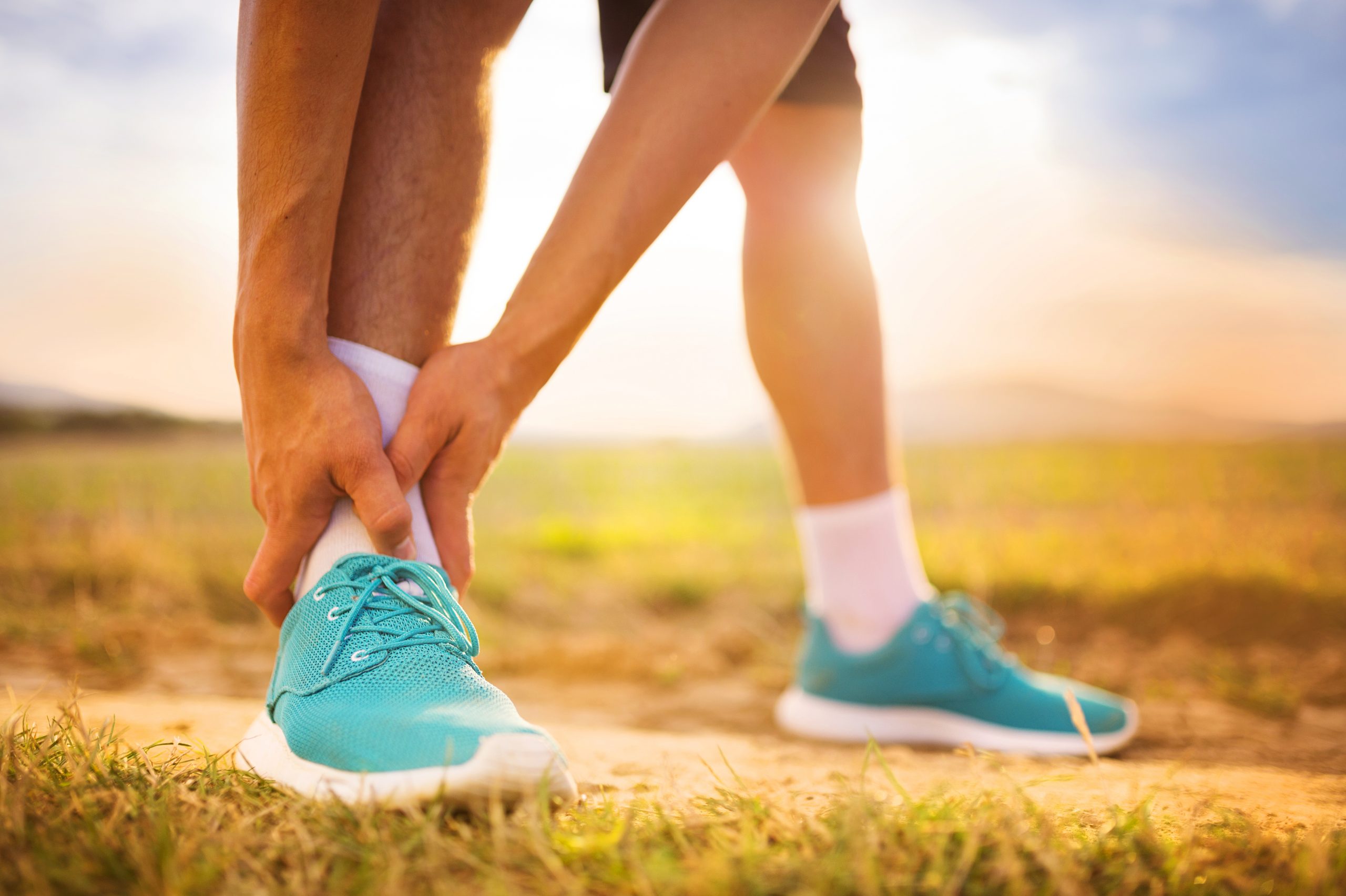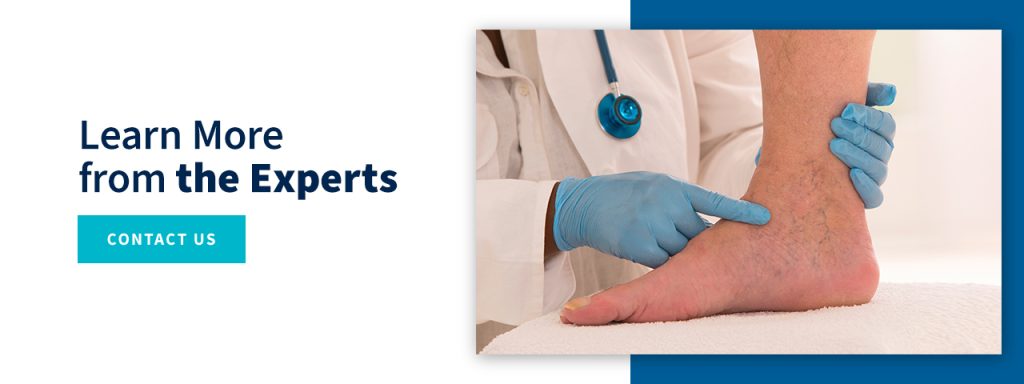
Your veins are designed to transport blood back to your heart to be oxygenated. When something malfunctions during the transportation process and causes the blood to leak backward, you’ll start noticing bluish or purplish varicose veins under your skin.
While varicose veins are usually seen in the legs, bulging veins can also show up on the feet and ankles — this is called Corona Phlebectasia. Bulging varicose veins on the ankles and feet develop when blood starts pooling there, sometimes leading to uncomfortable and serious health problems. Speak With A Specialist
Corona Phlebectasia, or bulging ankle veins and spider veins around the ankles can sometimes be just cosmetic concerns. Other times, these visible veins are a result of venous insufficiency, a serious medical problem. Venous insufficiency, also known as venous reflux disease, can affect both the ankles and feet. This common condition occurs when the saphenous vein is unable to supply blood back to the heart the way it should. Venous insufficiency causes blood to pool in the extremities, leading to swelling and twisted, bulging veins.
Whether varicose veins are the result of genetics or age, they can cause a wide range of symptoms, including throbbing and chronically swollen ankles. Other common symptoms that warrant a visit to a medical provider include:
It’s also important to remember that varicose veins can be a sign of a larger health problem. When left untreated, these bulging veins can eventually lead to complications ranging from dermatitis to skin ulcers in the legs or other parts of the body.
Because of the potential for serious side effects and complications, it’s important to get any bulging, painful varicose veins looked at by a professional. At Central Florida Vein and Vascular Center, our team of board-certified, fellowship-trained vascular surgeons is equipped with the experience and resources necessary to deliver high-level comfort and care.
We treat patients of all ages, offering a wide range of minimally invasive treatments. We are dedicated to discussing all treatment options with you and ensuring you understand all aspects of your venous care. Whether you are experiencing tender veins or ulcers, we’ll diagnose your condition and come up with an advanced, minimally invasive treatment plan based on your specific needs.

At Central Florida Vein and Vascular Center, our physicians will treat you right here in our office, allowing you to return to light-duty work immediately. Interested in learning more about our minimally invasive vein treatment options? Schedule a consultation with us to get started.